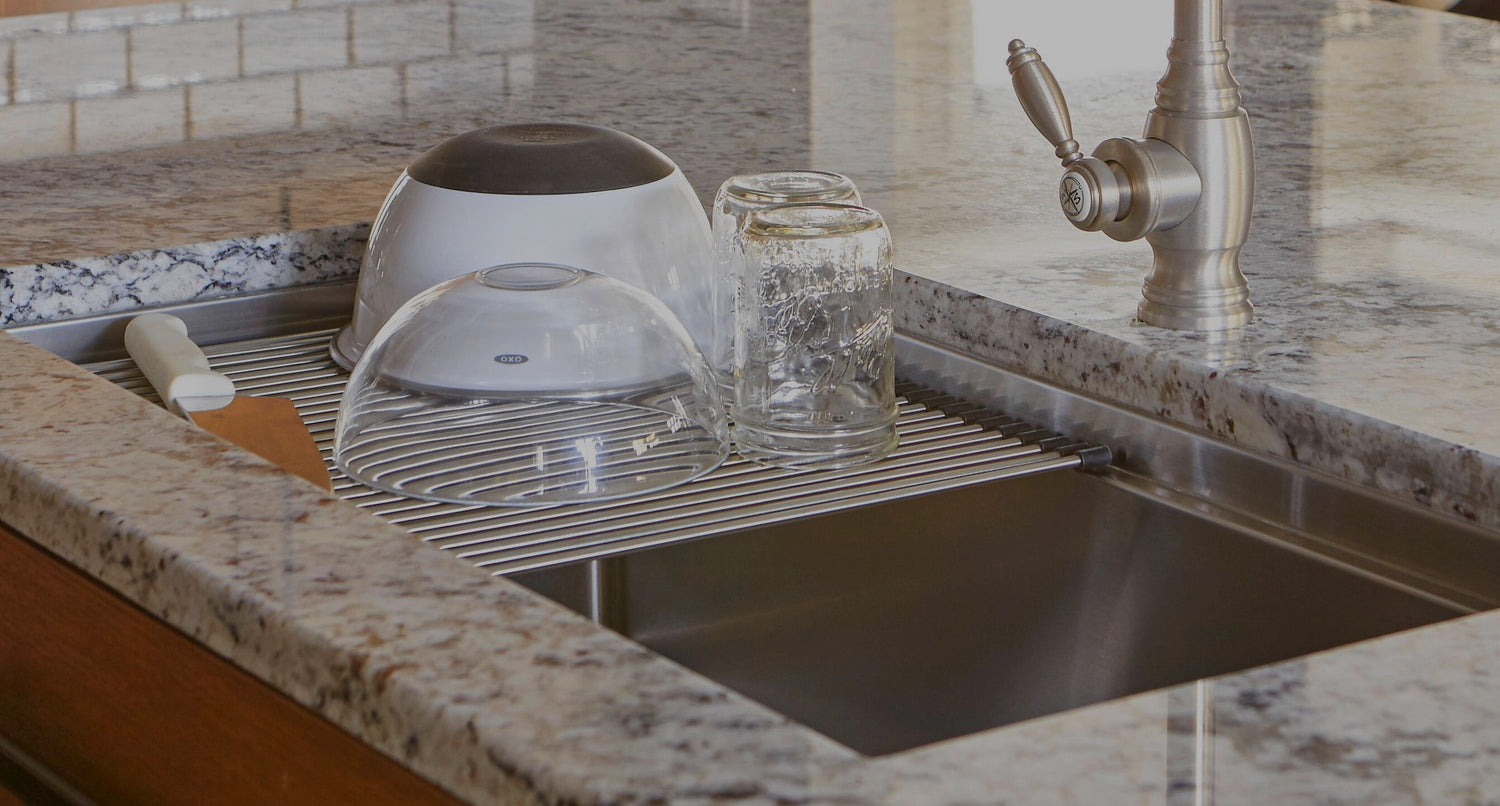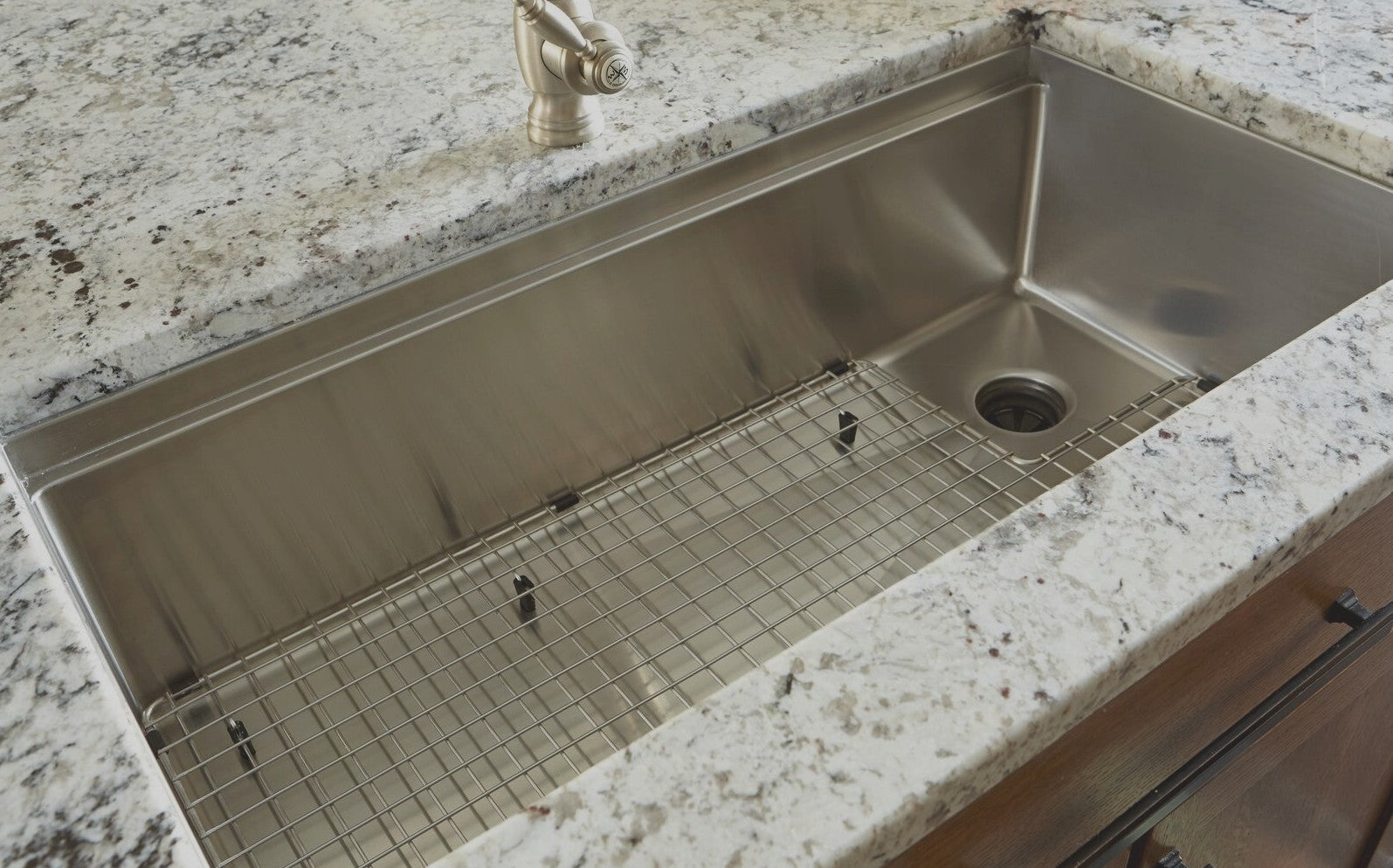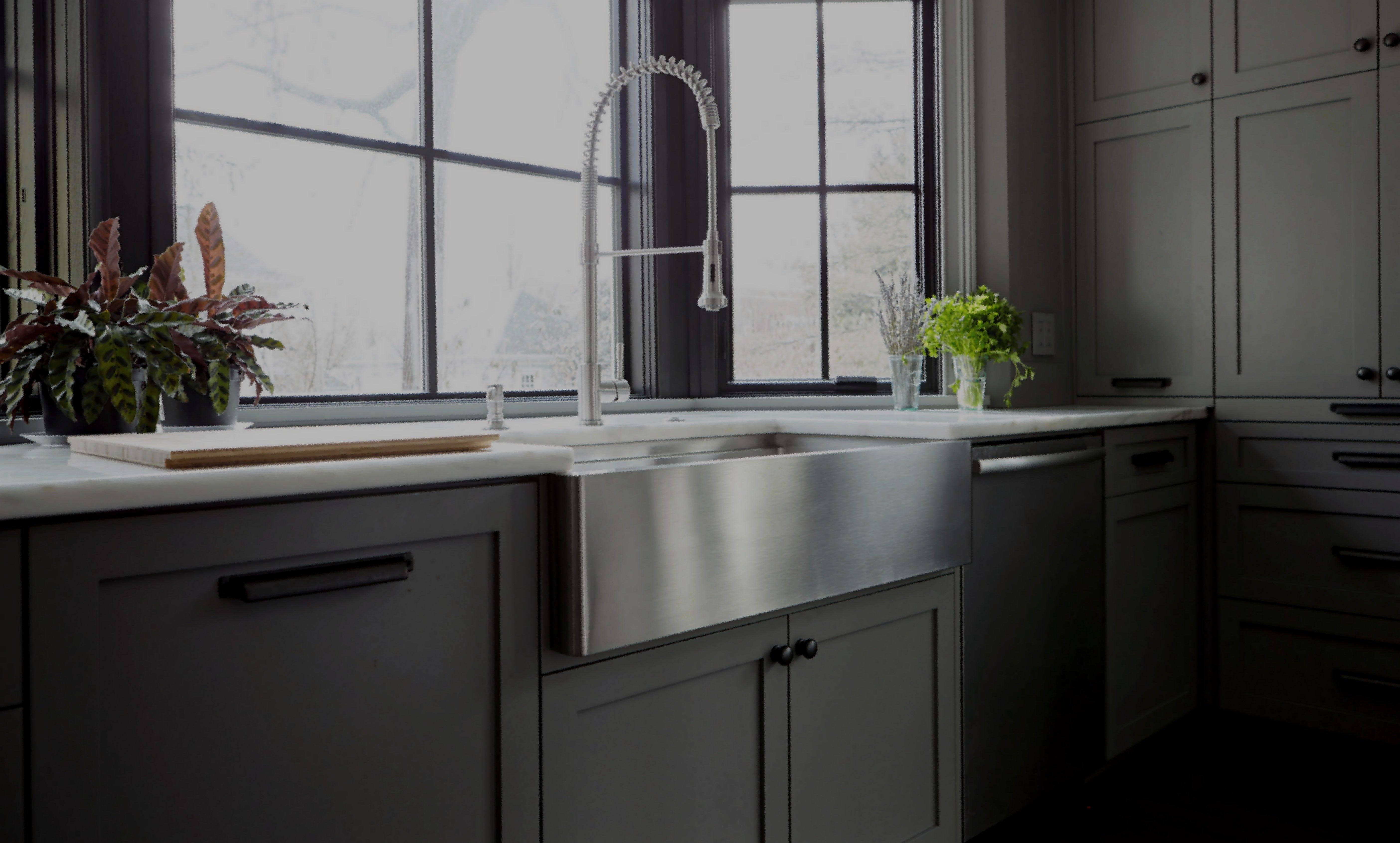Okay, so you've narrowed down your search and have settled on a stainless steel, undermount sink.
We've got you covered so far!
What else do you need to know to make sure you find the perfect sink for your kitchen?
Size: When figuring out the size sink you need, you will need to know how big your base cabinet is.
A common misconception is that the sink lip will rest on the walls of the cabinet for support. In reality, the sink will be mounted to the underside of the counter top with mounting hardware, epoxy, and in some instances, 2x4 supports.
You will want a little bit of clearance between the lip of the sink and the walls of the cabinets. If at some point down the line the sink needs to be removed, this bit of clearance will allow the sink to be removed from below, without removing the counter top.
Standard base cabinets typically increase in size in increments of 3" (30", 33", 36", etc...). This measurement is the total width of the cabinet. The measurement you will want to focus on is the inside width of the cabinet, especially with custom cabinets. We sized our sinks to correlate with standard cabinets, and we indicate the recommended size on each product page. For example, our 33" and 34" sinks will fit perfectly in a 36" base cabinet.
As a general rule of thumb, you will want at least a 1/2" of clearance on both sides between the lip of the sink and the inside walls of the cabinet (1/4" is tight, but doable!).
If you are unsure if a sink will fit, feel free to give us a call and we will help you out!
Offset drain: Offset drains are in! Over 90% of our inventory are with the offset drain design. The benefits are many- you can check out more on them here.
When deciding on which side to go with, we highly encourage you to opt for the same side as the dishwasher. This consolidates plumbing off to one side under the cabinet to give you more storage space. It also sets you up nicely to have a streamlined dish-washing experience (it sounds corny, but it's true!)
Single vs. Double Bowl: This decision really comes down to personal preference. If you do a lot of hand-washing, a double bowl sink may work very well for you. However, in larger, single bowl sinks, the amount of work area in the basin basically gives you the function of a double bowl sink, without the divider getting in the way.
Use your imagination and visualize how you are going to use your sink. If you like having division of space, for washing and prep, then a double bowl model might be perfect for you. This is your dream and you know yourself better than anybody, so trust in what you think is right for your kitchen.
Single vs. Double Faucet: We get a lot of folks who ask our opinions on whether they should opt for one or two faucets. My personal opinion, is that if you plan on having a work area that multiple people can use simultaneously, go big!
Typically, we see dual faucets installed with sinks over 39".
Double Ledge Option: While our ledge sinks come standard with one built-in ledge, we designed them with a slightly larger lip to give you the option of having two ledges. This option works well with our larger sinks, when you might want to slide accessories over each other.
To achieve the second ledge, you will need to instruct your counter top fabricator to cut a positive reveal which will expose the lip of the sink, and create the second ledge. Our recommended dimensions for this are 1/2" on the front and back and 1/4" on the left and right. See more about the double ledge option here.



1 comment
Arne Carlson
These are wonderful.
Leave a comment
All comments are moderated before being published.
This site is protected by hCaptcha and the hCaptcha Privacy Policy and Terms of Service apply.